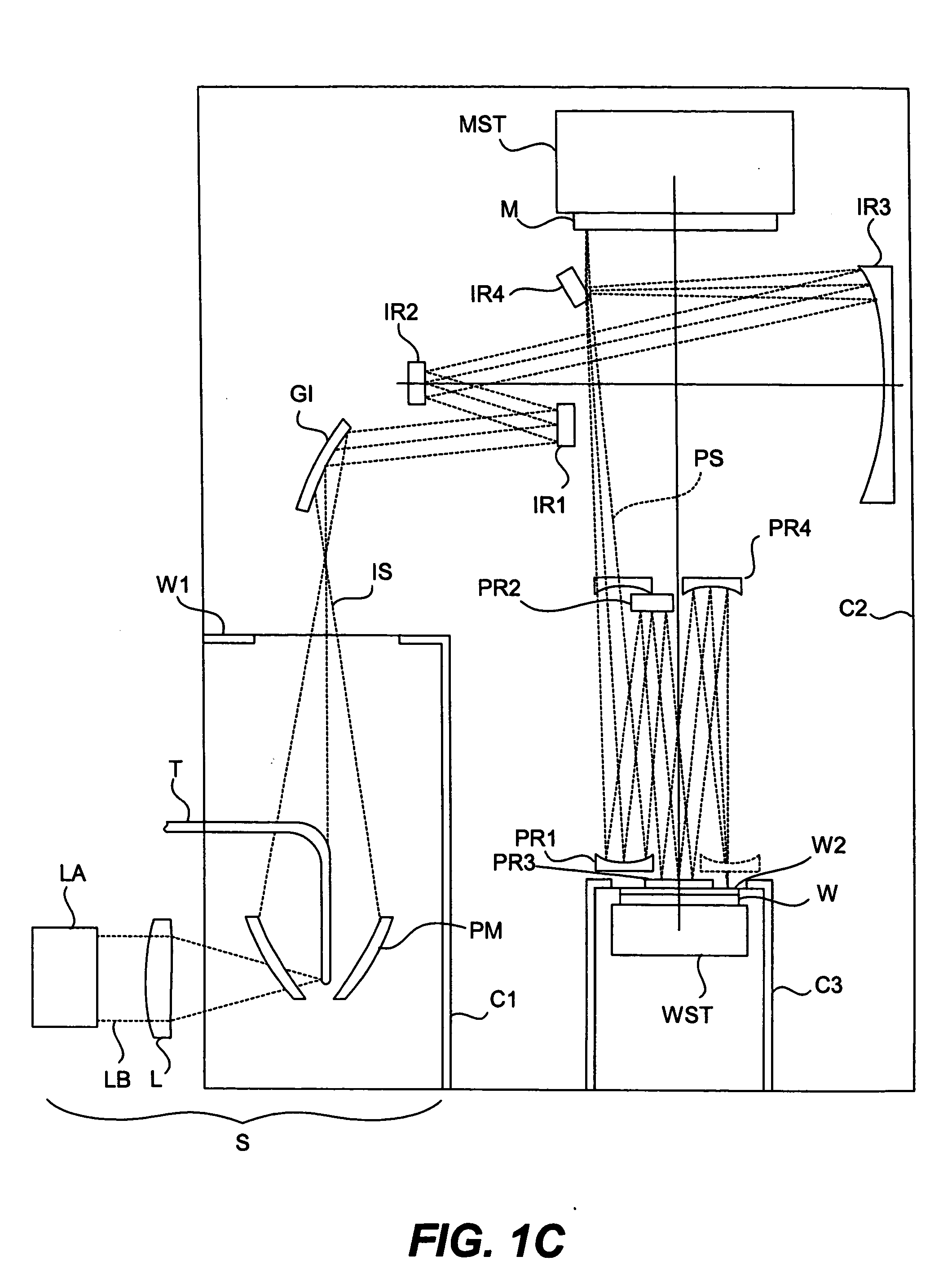Minimizing thermal distortion effects on EUV mirror
- Summary
- Abstract
- Description
- Claims
- Application Information
AI Technical Summary
Benefits of technology
Problems solved by technology
Method used
Image
Examples
Embodiment Construction
[0028]FIG. 4 shows schematically an EUV mirror system 10 embodying this invention, including an EUV mirror 20 with a front surface 22 and a back surface 24. The front surface 22 is where EUV illumination is intended to impinge. The mirror surface is normally curved and is assumed to possess, at least to a near approximation, axial symmetry. Throughholes (serving as cooling channels) 30 are provided through the mirror 20, lying in a plane approximately perpendicular to the axis of symmetry. The cooling channels 30 may serve to cause a cooling fluid (not shown) to flow therethrough. Since the coolant may be approximately of an atmospheric pressure or more while the mirror 20 typically operates in a vacuum environment, this pressure difference tends to cause some distortion of the mirror 20. One method of eliminating the effects of such distortion is to preliminarily polish the mirror 20 with the channels 30 over-pressurized by a specified amount such as one atmosphere, such that this ...
PUM
 Login to View More
Login to View More Abstract
Description
Claims
Application Information
 Login to View More
Login to View More - R&D
- Intellectual Property
- Life Sciences
- Materials
- Tech Scout
- Unparalleled Data Quality
- Higher Quality Content
- 60% Fewer Hallucinations
Browse by: Latest US Patents, China's latest patents, Technical Efficacy Thesaurus, Application Domain, Technology Topic, Popular Technical Reports.
© 2025 PatSnap. All rights reserved.Legal|Privacy policy|Modern Slavery Act Transparency Statement|Sitemap|About US| Contact US: help@patsnap.com



